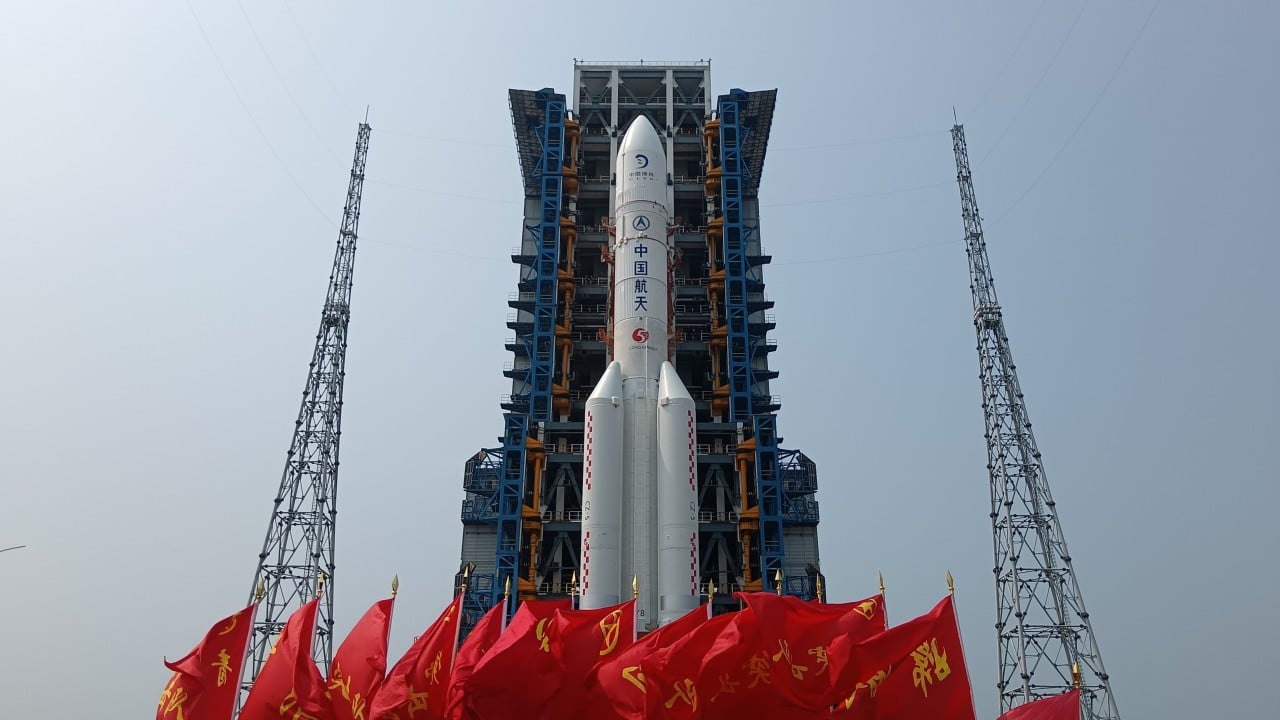China’s Chang’e 6 robotic mission to bring back samples from the far side of the moon for the first time is expected to lift off this week as the country takes another step in its ambitions to put a person on the lunar surface by 2030.
The China National Space Administration (CNSA) said on Saturday that the Chang’e 6 lunar probe and the Long March-5 Y8 carrier rocket combination had been transported to the launch pad at the Wenchang Space Launch Site in Hainan province for final tests and loading of propellant.
The mission, set to launch in early May, will be the world’s first attempt to collect samples from the side of the moon that faces away from the Earth.
The lander will collect about 2kg (4.4lbs) of samples, compared to 1.731kg brought back by Chang’e 5 in 2020.
Analysis of the samples is expected to give further insight into the history of the moon, Earth and solar system, as well as mark a new chapter of China’s lunar exploration programmes.
US-China space race fuelled by lunar landings and orbital ‘parking spots’
US-China space race fuelled by lunar landings and orbital ‘parking spots’
Chang’e 6 will touch down in the Apollo basin, an area of rugged terrain beyond the range of direct communication with the Earth.
To keep in touch with the lander on the lunar surface, China launched the Queqiao-2 satellite in March to relay messages to and from ground stations on Earth.
Zhu Haiyang, from the China Academy of Launch Vehicle Technology, told state broadcaster CCTV on Saturday that the lunar orbit posed “extra high requirements for the launch window”.
The constantly changing relative positions of the Earth and moon meant there was a narrower launch window than, for example, for a low-Earth orbit spacecraft launch.
Zhu said the team used a “narrow window, multiple trajectories” launch strategy to make the most of their chances.
Ge Ping, deputy director at the CNSA’s Lunar Exploration and Space Programme Centre, told CCTV that the mission marked a series of technological advances.
“[Chang’e 6] will make breakthroughs in lunar orbit design and control technology, intelligent sampling technology and take-off and ascent technology on the lunar dark side, and ultimately achieve automatic sampling and return from the lunar dark side,” Ge said.
Chinese scientists may be a step closer to unravelling mystery of lunar surface
Chinese scientists may be a step closer to unravelling mystery of lunar surface
The first Chang’e mission lifted off in 2007, sending a probe into lunar orbit. In 2013, Chang’e 3 landed a rover on the near side of the moon and in 2019, Chang’e 4 became the first spacecraft to perform a soft landing on the far side of the moon, delivering the robotic rover Yutu-2 to the surface.
Lin Xiqiang, deputy director of the China Manned Space Agency, said on Wednesday that China was on track to put astronauts on the moon by 2030.
Lin said the key components of that mission, such as the Long March 10 rocket, the Mengzhou spacecraft and spacesuits to be used on the lunar surface, were all in development and testing.
The CNSA was working on choosing the lunar rover crew and lunar surface payloads, Lin said.
Meanwhile, the Chang’e 7 mission will launch in 2026. It will consist of an orbiter, a lander, a rover and a small flying probe to fly into pits on the lunar surface to look for ice.
After that, Chang’e 8 is scheduled to reach the moon’s south pole around 2028. Components of the two missions will form the basis of a planned International Lunar Research Station, supported by Russia, Venezuela, Pakistan and others, aiming to establish a permanent human presence on the moon.


